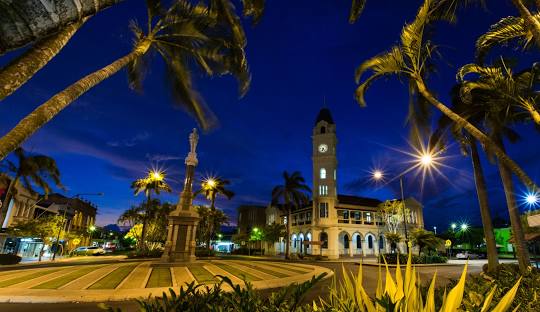
Bundaberg: A Vibrant Hub of History, Agriculture, and Tourism in Queensland
Posted by on
Bundaberg, located in the Bundaberg Region of Queensland, Australia, is a bustling city known for its rich agricultural heritage and vibrant cultural scene. As the tenth largest city in the state, Bundaberg serves as a key center in the Wide Bay–Burnett region, situated approximately 364 kilometers north of Brisbane along the picturesque Burnett River. With a population of 73,747 according to the 2021 census, the city is a thriving community that has evolved significantly since its establishment in 1870.
The layout of Bundaberg was designed by district surveyor John Thompson Charlton in 1868, characterized by wide streets and uniform square blocks. This early planning facilitated the growth of the region, particularly following the introduction of the 1868 Land Act, which aimed to foster a class of yeoman farmers. The city's economy flourished in the late 19th century with the establishment of expansive sugarcane plantations, accompanied by a network of sugar mills and rum distilleries. Bundaberg's agricultural roots run deep, supported by its fertile coastal plains, making it one of Australia's most productive farming regions.
However, the city’s history is not without its challenges. The use of South Sea Islanders as indentured laborers during the sugar boom raised serious ethical concerns, leading to the eventual outlawing of such practices in the early 20th century. Bundaberg also faced significant flooding in 1942 and 1954, which severely impacted its river port operations. A more recent disaster occurred in 2013 when Cyclone Oswald brought unprecedented flooding, marking a significant event in the city’s history.
Today, Bundaberg's economy is anchored in agriculture, forestry, fishing, and tourism, with a gross regional product estimated at $5.6 billion as of 2023. The Bundaberg Rum Distillery, one of the city's most famous attractions, is renowned internationally, contributing to the city’s vibrant distillery and brewery sector.
In addition to its agricultural and economic significance, Bundaberg offers a wealth of cultural and historical sites. The city's humid subtropical climate is home to weeping fig trees, dry stone walls, and historic plantations like the Fairymead and Sunnyside Sugar Plantations, which reflect the area’s colonial past. Cultural institutions, such as the Hinkler Hall of Aviation and the Bundaberg Regional Art Gallery, showcase the city’s artistic spirit.
Bundaberg is also a gateway to natural attractions, including the nearby Great Barrier Reef and various national parks. Tourists flock to the hinterland towns of Childers and Gin Gin, as well as coastal areas like Bargara and Mon Repos. Events such as the 'Banquet on the Bridge' celebrate the city's culinary offerings, further enhancing its appeal as a tourist destination.
In summary, Bundaberg is a city rich in history, culture, and economic diversity, making it a notable location in Queensland. Its combination of agricultural prowess, historical significance, and natural beauty continues to attract visitors and residents alike.